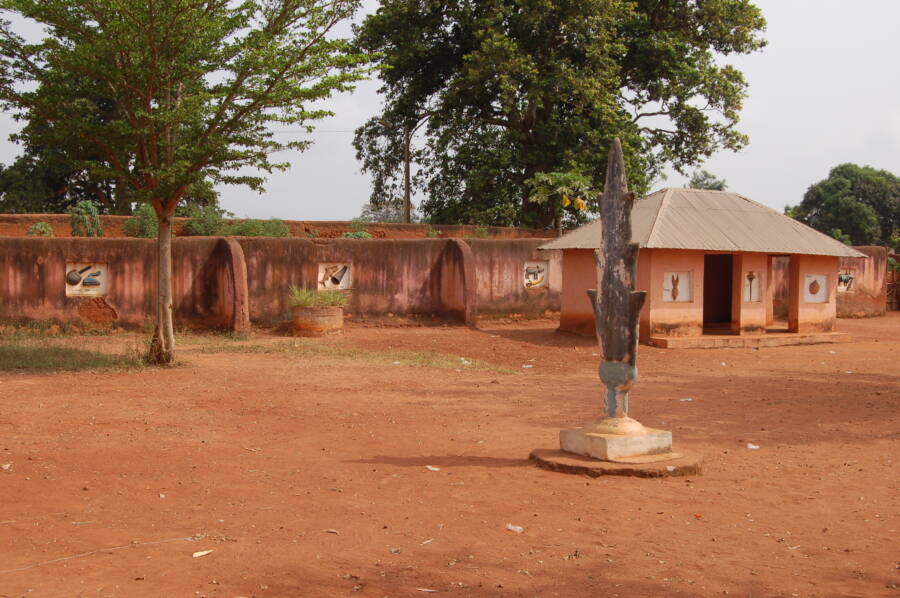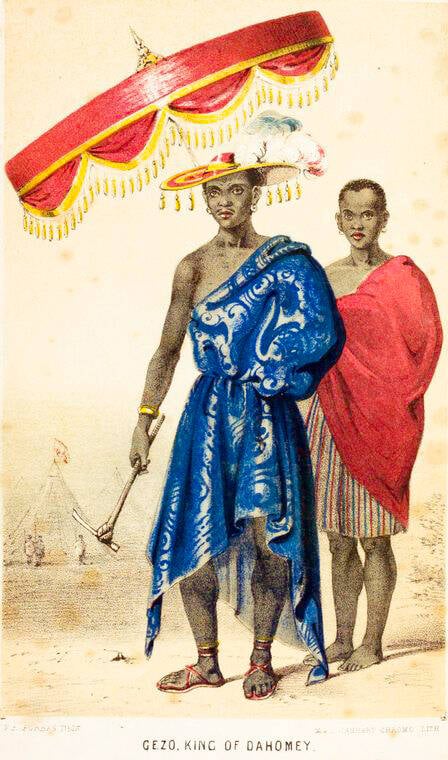It was long rumored that a tomb built on the orders of the infamous King Ghezo was constructed using the blood of human sacrifice victims. Now, a new study suggests this legend is likely true.

Wikimedia CommonsThe royal palaces of Abomey.
From 1818 to 1858, the infamously bloodthirsty King Ghezo ruled the kingdom of Dahomey in West Africa from his palace in the city of Abomey. While the kingdom eventually fell to French colonization near the end of the 19th century, hints of Ghezo’s carnage still remain to this day.
A new study published in the journal Proteomics examined the remains of Ghezo’s palace and found disturbing evidence of some unconventional building methods, to say the least — including the use of human blood in the palace’s mortar.
The Bloody History Of King Ghezo’s Tomb
Throughout his reign, King Ghezo was known for his military prowess and his show of brutal violence toward his enemies.
He was allegedly so vicious that “the alley leading to his hut was paved with the skulls and jawbones of defeated enemies,” while his throne “rested on the skulls of four defeated enemy leaders,” according to the study’s authors.
King Ghezo waged numerous campaigns against the Yoruba, with unofficial reports claiming he died during one such ambush. Officially, however, Ghezo died peacefully in his home.
Before his death, he ordered the construction of two adjoined funerary huts built in honor of his father, Adandozan, who ruled from 1797 to 1818. For years, it’s been rumored that this tomb on the palace property was built using the blood of 41 human sacrifice victims.
These individuals would likely have been prisoners of war or enslaved people — and because 41 is a sacred number in voodoo, they would likely have been sacrificed in a voodoo ceremony meant to protect the remains of the late king.
The study’s authors noted that the kings of Abomey were “God-kings,” with a culture and religion centered on voodoo.

Wikimedia CommonsKing Ghezo of Dahomey, who ruled from 1818 to 1858.
“In this chrono-cultural context, death is only a change of state, not a total disappearance,” researchers said. “Importantly, a barrier between the human world and the place where the body is laid (or the spirit of the deceased) can be magically delineated. This separator is part of a supernatural border, since metaphysical elements are incorporated into the physical wall.”
Elements used to consecrate buildings such as these included prayers, sacred water, and the blood of enemies, among others. When combined, their mystical force was said to symbolically protect “what remains of the subtle essence of the deceased king.”
But was there any truth to these rumors? Would Ghezo’s people have actually mixed human blood into the tomb’s mortar?
As it turns out, yes.
How Researchers Identified The Blood In Ghezo’s Tomb
A team of researchers from the Musée du Quai Branly in Paris, the Abomey-Calavi University in Benin, and the French Ministry of Europe and Foreign Affairs recently set out to determine whether the legend about Ghezo’s tomb was true.
The researchers used high-resolution tandem mass spectrometry to analyze the reddish mortar used to construct the funeral huts’ walls and break down its exact composition.
Specifically, they examined the proteomic results, rather than genomics, as “DNA degrades easily over time depending on the storage conditions… and most importantly for this study, it cannot provide information on the source tissue.” Proteins, however, can serve as a “biological archive,” as evidenced by other recent studies.
Examining these proteins, researchers identified the presence of hemoglobin and immunoglobulins from both humans and chickens in the mortar.
In short: Human blood was, indeed, used to construct the funerary huts at Ghezo’s palace.

Charlier et al., Proteomics 2024The blood-infused walls of Ghezo’s tomb.
It was not immediately clear whose blood was used in the mortar or where it came from, but the study authors noted that when a Dahomey king died, a ritual known as the “Great Customs” was often carried out. This ritual included the sacrifice of as many as 500 victims, so it’s possible the blood used in the mortar may have come from one such ceremony.
For now, the source of the blood remains unclear, but researchers said that further DNA analysis might help to identify the exact number of individuals whose blood was used in the mortar.
After reading about the macabre construction of King Ghezo’s funerary huts, learn all about human sacrifice in the pre-Columbian Americas. Or, learn about immurement and the horrific history of burying people alive.





